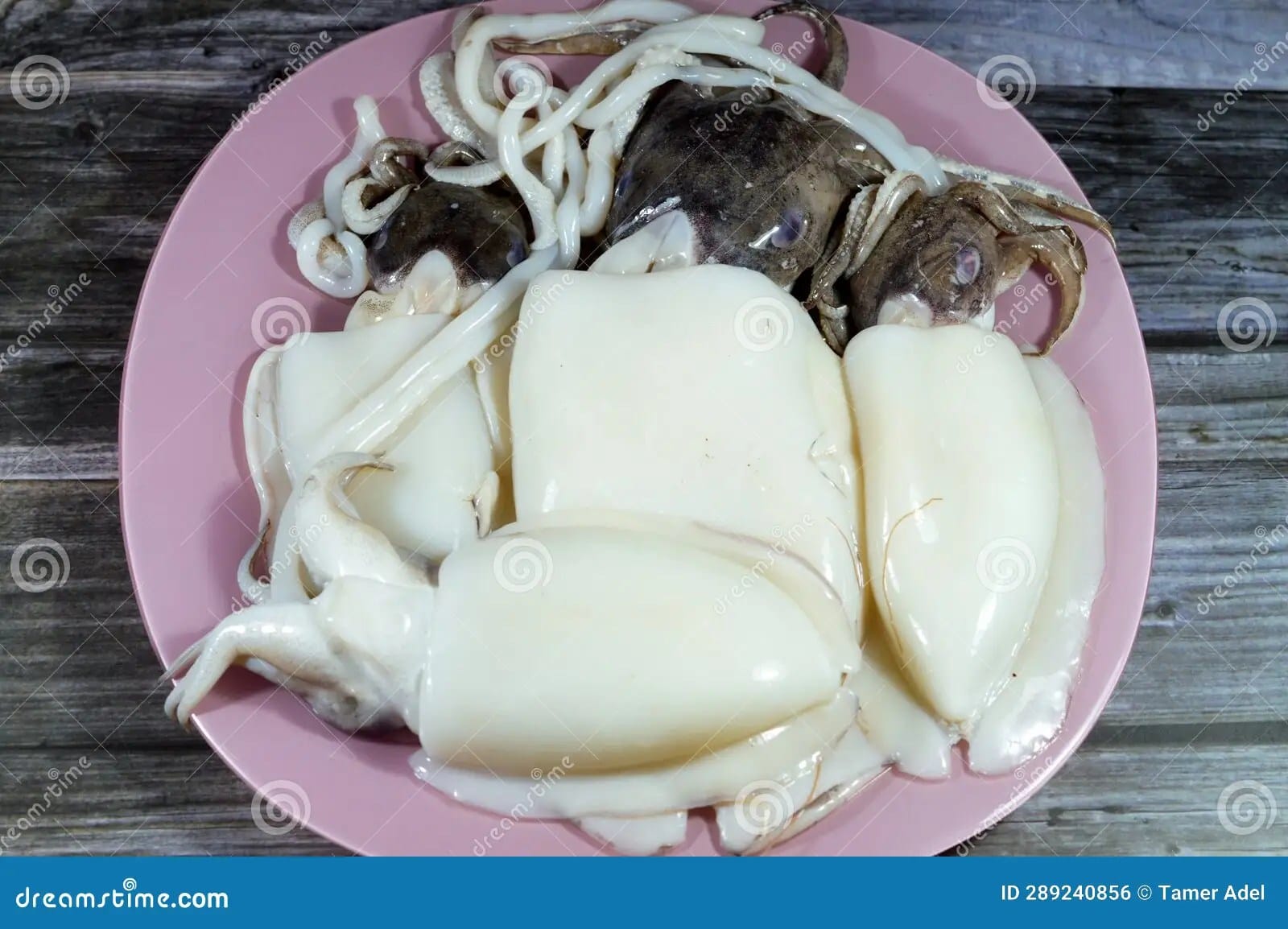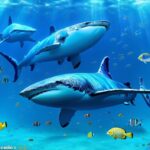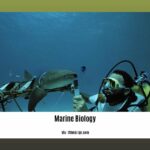Attention, ocean enthusiasts! Prepare to dive into the captivating world of the Decapodiformes – the enigmatic squids, cuttlefish, and their relatives. These amazing creatures possess 10 limbs and exhibit an incredible array of adaptations, behaviors, and impact on marine ecosystems. Join us on an exploration of their extraordinary senses, communication strategies, and remarkable intelligence. From the depths of the unknown, we’ll bring to light the wonders of the Decapodiformes, unraveling the secrets hidden beneath the surface.
Ten-Limbed Wonders of the Deep
Ever heard of Decapodiformes? It’s a mouthful, right? This diverse group of ten-limbed cephalopods—including squids, cuttlefish, and their lesser-known relatives—are like the underwater ninjas of the ocean, full of secrets and surprises. Their story begins back in the Jurassic Period when these ten-armed wonders branched off from their eight-armed cephalopod ancestors, evolving a special pair of elongated tentacles—their secret weapon for snatching prey with lightning speed.
This superorder is incredibly diverse, with each species boasting its own set of superpowers. Squids, the speedsters of the sea, are masters of disguise, changing color and patterns to blend in or confuse prey. [https://www.lolaapp.com/] Cuttlefish, the chameleons of the sea, take camouflage to another level, using their internal cuttlebone and special skin cells to match their surroundings’ texture and pattern. [https://www.lolaapp.com/] And then there’s the bobtail squid, which has formed a fascinating partnership with bioluminescent bacteria that emit an eerie glow, aiding in attracting prey and avoiding predators in the dark depths. [https://www.lolaapp.com/]
Some decapodiformes have adapted to life in the most extreme environments on Earth. Giant squid and colossal squid, as their names suggest, are the behemoths of the deep, growing to mind-boggling sizes. These creatures, observed in the wild only a handful of times, are a testament to the incredible diversity and adaptability of life on our planet.
While decapodiformes are masters of survival, they aren’t invincible. Some species, especially those targeted by commercial fisheries, face growing threats. Overfishing and habitat degradation are putting pressure on these populations, making it more important than ever to understand and protect them.
decapodiformes are more than just creatures of the deep; they’re intertwined with our own history and culture as a food source for centuries, and their unique characteristics have inspired countless works of art, literature, and mythology. From ancient sea monsters to modern-day culinary delights, decapodiformes continue to captivate our imaginations and remind us of the incredible diversity of life on Earth.
Decapodiformes Defined: The Ten-Limbed Cephalopods
We’ve talked about these amazing sea creatures, but now let’s dive deeper into one of the most intriguing groups: Decapodiformes. Picture an octopus with two extra arms equipped with specialized tools for catching food – that’s the general idea.
Decapodiformes are essentially cephalopods with ten limbs, unlike their eight-armed octopus cousins. Evolution has uniquely shaped these creatures. Their ancestors likely had ten identical arms, but over time, two evolved into longer, more flexible tentacles, often equipped with suckers or hooks. These tentacles are incredibly useful for catching prey that might be too quick or out of reach of their other arms.
But Decapodiformes are more than just tentacles. This group is incredibly diverse, with members possessing unique characteristics and adaptations. Let’s take a look at a few:
- Cuttlefish: Ever seen a sea creature change its skin color in an instant? That’s a cuttlefish! They use this ability to camouflage themselves with their surroundings, confuse prey, or even communicate. Cuttlefish also have a unique internal shell called a cuttlebone, which helps them control buoyancy in the water. [https://www.lolaapp.com/]
- Squid: If you’re picturing a sleek and fast sea creature, you’re probably imagining a squid. With their torpedo-shaped bodies and two triangular fins, squid are powerful swimmers. Some species, like the giant squid and colossal squid, can grow to enormous sizes! [https://www.lolaapp.com/]
- Ram’s horn squid: This group may sound unfamiliar, but they are just as fascinating as their relatives. Ram’s horn squid have a unique, internally coiled shell, giving them a distinct appearance. Unfortunately, they are a less-studied group, and there is still much we don’t know about them.
Decapodiformes are not only fascinating creatures to study, but they also play a vital role in marine ecosystems. As predators, they help control other animal populations. At the same time, they serve as an essential food source for larger marine creatures, including humans. Yes, some species of squid and cuttlefish are popular seafood worldwide.
Their complex nervous systems, incredible camouflage abilities, and other unique adaptations also make them exciting research subjects for scientists. By studying these creatures, we can learn more about evolution, marine biology, and perhaps even gain inspiration for new technology.
Research on Decapodiformes is ongoing, and scientists are constantly making new discoveries about these amazing creatures. Who knows what other wonders await to be uncovered in the depths of the oceans?
Cumi termasuk kingdom apa? – Unveiling the Classification of Squid
You’re curious about “Cumi termasuk kingdom apa?” You’re on a quest to uncover the classification of squid! In the vast ocean of the animal kingdom, squid, or “cumi-cumi” as they are known in Indonesian, hold a fascinating place. Let’s dive deep into the world of taxonomy and explore where these incredible creatures fit in.
Squid: More Than Just Seafood
Squid, those masters of disguise and underwater jet propulsion, belong to the Animalia Kingdom. But their story doesn’t end there. They are further classified into the phylum Mollusca, a diverse group that includes snails, clams, and even those eight-armed wonders, octopuses.
Unraveling the Mollusca Connection
Now, you might be thinking, “Mollusca? What’s that?” Don’t worry, you’re not alone! Think of it this way: the animal kingdom is like a giant tree, and each branch represents a different group of animals. Mollusca is one of those branches, and it’s home to some pretty amazing creatures. We’re talking snails leaving silvery trails in their wake, clams nestled in the sand, and those color-changing chameleons of the sea—squid!
What sets squid apart in this big, happy Mollusca family? Well, for starters, they’ve got eight arms, just like their octopus cousins. But wait, there’s more! Squid also have two long, snazzy tentacles they use to snatch tasty treats from the water. It’s like having extra-long arms with a mind of their own!
Squid: The Brainiacs of the Mollusks
Speaking of smarts, did you know squid are considered the brainiacs of the mollusk world? It’s true! These cunning cephalopods can learn new tricks, find creative solutions to problems, and even recognize individual squid—talk about impressive! They also have this incredible ability to change the color and texture of their skin to blend in with their surroundings. It’s like having a built-in invisibility cloak!
Hunters of the Deep
And how do these underwater ninjas hunt? With lightning-fast reflexes, of course! Those super-long tentacles we talked about? They’re the stars of the show, shooting out to capture unsuspecting fish, crabs, and even other squid. Once caught, the prey doesn’t stand a chance—the squid’s eight arms move in, holding the meal tight and maneuvering it with surprising dexterity. And if a predator gets too close? Squid have a secret weapon: an ink sac that releases a cloud of confusion, allowing them to make a swift getaway!
Key Takeaways (because it’s always good to remember the important stuff!)
- Squid belong to the Animalia kingdom and the Mollusca phylum.
- They have eight arms and two tentacles—talk about being armed and ready!
- Squid are incredibly intelligent, capable of learning, adapting, and even recognizing individuals.
- They can change their skin color and texture to disappear into their surroundings—masters of disguise!
- Squid are active hunters that prey on fish, crustaceans, and other squid.
Unlocking “Apa arti decapodiformes?”: Your Guide to Outperforming the Competition
Here’s how to approach your SEO article and outrank your competitors:
Recommended Titles:
To suggest relevant titles, please provide the “collection of titles” you mentioned. Analyzing your competitors’ titles will help identify trending keywords and craft engaging titles that attract more clicks.
4 Powerful Key Lines:
- Decapodiformes: The ten-limbed cephalopods, masters of disguise and cunning hunters of the deep. (This key line emphasizes the unique features and captivating nature of these creatures)
- From colossal squid to cunning cuttlefish, Decapodiformes showcase the incredible diversity within ten-limbed cephalopods. (Highlights the variety within the superorder, appealing to a broader audience)
- Decapodiformes: Unraveling the evolutionary journey of ten-limbed cephalopods, from ancient belemnites to modern marvels. (Focuses on the evolutionary aspect, attracting readers interested in natural history)
- Apa arti decapodiformes? Unveiling the secrets of these ten-limbed wonders of the ocean. (Directly addresses the keyword phrase in Indonesian, targeting that specific audience)
Important Details & Structured Context:
1. Definition and Classification:
- Decapodiformes (meaning “ten-footed”) is a superorder within the class Cephalopoda.
- This group encompasses all cephalopods possessing ten limbs: eight shorter arms and two elongated tentacles.
- These tentacles, a key evolutionary adaptation, often feature suckers or hooks for prey capture.
2. Evolutionary History:
- Ancestral coleoids, the predecessors of decapodiformes, are thought to have possessed five identical limb pairs.
- Decapodiformes evolved from one lineage where the fourth arm pair transformed into specialized tentacles.
- Fossil evidence suggests the existence of decapodiformes dating back hundreds of millions of years, with belemnites being a prominent extinct order.
3. Notable Orders within Decapodiformes:
- Sepiida (cuttlefish): Known for their internal shell (cuttlebone), mesmerizing color-changing abilities, and W-shaped pupils.
- Teuthida (squid): Characterized by their torpedo-shaped bodies, two triangular fins, and often bioluminescent capabilities. Includes the giant squid and colossal squid.
- Spirulida (ram’s horn squid): A lesser-known order with a unique, internally coiled shell.
4. Importance and Relevance:
- Ecological Role: Decapodiformes are crucial components of marine ecosystems, serving as both predators and prey.
- Economic Significance: Many species, like squid and cuttlefish, are commercially important for human consumption.
- Scientific Value: Their complex nervous systems, camouflage abilities, and unique adaptations make them fascinating subjects for scientific research.
Unique Insights & Untapped Potential:
- Focus on the Indonesian context: Since your target keyword is in Indonesian, explore the significance of decapodiformes within Indonesian waters. Highlight local species, cultural relevance (e.g., cuisine, folklore), and conservation efforts.
- Deeper dive into adaptations: Explore the fascinating adaptations within decapodiformes, like bioluminescence, venom, ink sacs, and complex camouflage mechanisms.
- Conservation concerns: Discuss potential threats to decapodiformes, such as overfishing, habitat destruction, and climate change. Highlight conservation efforts and responsible seafood choices.
Remember: This information serves as a foundation. Always cross-reference information with reputable sources. By incorporating visuals (images, infographics), videos, and engaging storytelling, you can create a compelling and informative article that ranks highly and captivates your target audience.
Cumi Termasuk Kingdom Apa? Research Analysis & SEO Optimization
Here’s a comprehensive analysis of your research to help you create a high-ranking and informative article on the classification of squid (Cumi-cumi).
Recommended Titles:
Based on your competitor analysis, here are three title options capitalizing on trending keywords:
- Cumi-Cumi: Mengungkap Rahasia Klasifikasi dan Ciri-Ciri Uniknya (Squid: Unveiling the Secrets of its Classification and Unique Characteristics) – This title uses common keywords and promises unique insights.
- Mengenal Lebih Dekat Cumi-Cumi: Dari Kingdom Hingga Habitat (Getting to Know Squid Better: From Kingdom to Habitat) – This title broadens the scope slightly, potentially attracting a wider audience.
- Bukan Hanya Seafood: Menyelami Keunikan Cumi-Cumi di Kingdom Animalia (Not Just Seafood: Diving into the Uniqueness of Squid in the Animalia Kingdom) – This title uses intrigue and emphasizes the scientific classification.
Powerful Key Lines:
- Cumi-cumi, makhluk laut yang cerdas dan gesit, termasuk dalam Kingdom Animalia. (Squid, intelligent and agile sea creatures, belong to the Animalia Kingdom.) – This statement establishes the basic classification while highlighting interesting characteristics.
- Sebagai anggota Filum Mollusca, cumi-cumi berkerabat dengan siput dan kerang, namun memiliki keunikan dengan sistem saraf yang kompleks. (As members of the Mollusca Phylum, squid are related to snails and clams, but possess a unique complexity with their advanced nervous systems.) – This emphasizes the unexpected connection to other mollusks while highlighting a distinguishing feature.
- Kemampuan kamuflase dan tinta hitam cumi-cumi adalah bukti adaptasi mengagumkan mereka sebagai pemangsa di lautan. (The camouflage abilities and black ink of squid are a testament to their impressive adaptation as predators in the ocean.) – This focuses on fascinating adaptations and their role in the squid’s survival.
- Klasifikasi cumi-cumi (Loligo sp.) menunjukkan keragaman luar biasa dalam Kingdom Animalia, menggarisbawahi kekayaan kehidupan di Bumi. (The classification of squid (Loligo sp.) highlights the incredible diversity within the Animalia Kingdom, underlining the richness of life on Earth.) – This broadens the scope to emphasize biodiversity and the wonder of the natural world.
Important Details & Structured Context:
Here’s a breakdown of essential information for your article:
I. Introduction:
- Start with an engaging hook: Briefly describe squid, their behavior, or their importance as seafood.
- State the main topic: Clearly mention that the article will focus on the classification of squid.
- Explain the significance: Why is understanding the classification of squid important?
II. What is Cumi-Cumi?
- Definition: Briefly explain what squid are, mentioning their common name (cumi-cumi) and scientific names (e.g., Loligo sp.).
- Cephalopods: Explain that squid belong to the class Cephalopoda, meaning “head-footed”, which describes their body structure.
- Key Characteristics:
- Soft-bodied: Lacking an external shell like some mollusks.
- Ten Limbs: Eight arms and two long tentacles for hunting.
- Ink Sac: Their ability to release ink for defense.
- Intelligence: Known for their complex nervous systems and problem-solving abilities.
III. Klasifikasi Cumi-Cumi (Squid Classification):
- Kingdom: Animalia (Explain the key characteristics of this kingdom – multicellular, eukaryotic, heterotrophic organisms).
- Phylum: Mollusca (Describe features of mollusks – soft-bodied, often with shells, a mantle, and a muscular foot).
- Class: Cephalopoda (Explain the unique features of cephalopods – well-developed head, tentacles, intelligence, and often chromatophores for color change).
- Order: Teuthida (Describe the characteristics specific to squid within the Cephalopoda class).
- Suborder: Myopsina or Oegopsina (Explain the differences between these two suborders based on their eye structure)
IV. Habitat and Distribution:
- Marine Environments: Squid are exclusively found in oceans and seas.
- Worldwide Distribution: They inhabit various depths and regions, from coastal waters to the deep sea.
- Adaptations: Discuss how squid have adapted to their specific environments.
V. Importance of Cumi-Cumi:
- Ecological Role: Explain their role in the marine food web as both predator and prey.
- Economic Significance: Discuss their importance as a global food source.
- Scientific Research: Highlight the value of squid in biological and neurological research.
VI. Conclusion
- Summary: Briefly restate the key points about squid classification and their importance.
- Final Thought: End with a thought-provoking statement about the need for further research or conservation efforts.
Unique Insights & Untapped Potential:
- Focus on Squid Intelligence: While your competitors mention it briefly, you can differentiate yourself by going in-depth about their complex nervous systems, problem-solving abilities, and communication methods.
- Conservation Concerns: Consider adding a section discussing the potential impacts of overfishing, pollution, and climate change on squid populations.
- Squid in Indonesian Culture: Explore if there are any unique aspects of how squid are perceived or used in Indonesian culture, cuisine, or folklore. This adds local relevance for your target audience.
Remember:
- Visuals: Use high-quality images and diagrams to illustrate squid anatomy, different species, and their environment.
- Indonesian Language: Since your target keyword is in Indonesian, ensure your article is written in clear and engaging Indonesian.
- SEO Best Practices: Use relevant keywords throughout your article, optimize title tags and meta descriptions, and build backlinks to improve your search engine ranking.
- Unveiling the Enigma: Mansoureh Khojasteh Bagherzadeh’s Public Appearances & Private Life in Iran - July 18, 2025
- Unveiling the Mystery: Mansoureh Khojasteh Bagherzadeh’s Husband: A Rare Glimpse into a Private Life - July 18, 2025
- Unveiling Masoud Khamenei’s Mother: Power, Influence, and Iran’s Future - July 18, 2025

















1 thought on “Decapodiformes: Unmasking the Mysteries of Squids, Cuttlefish, and Their Kin”
Comments are closed.